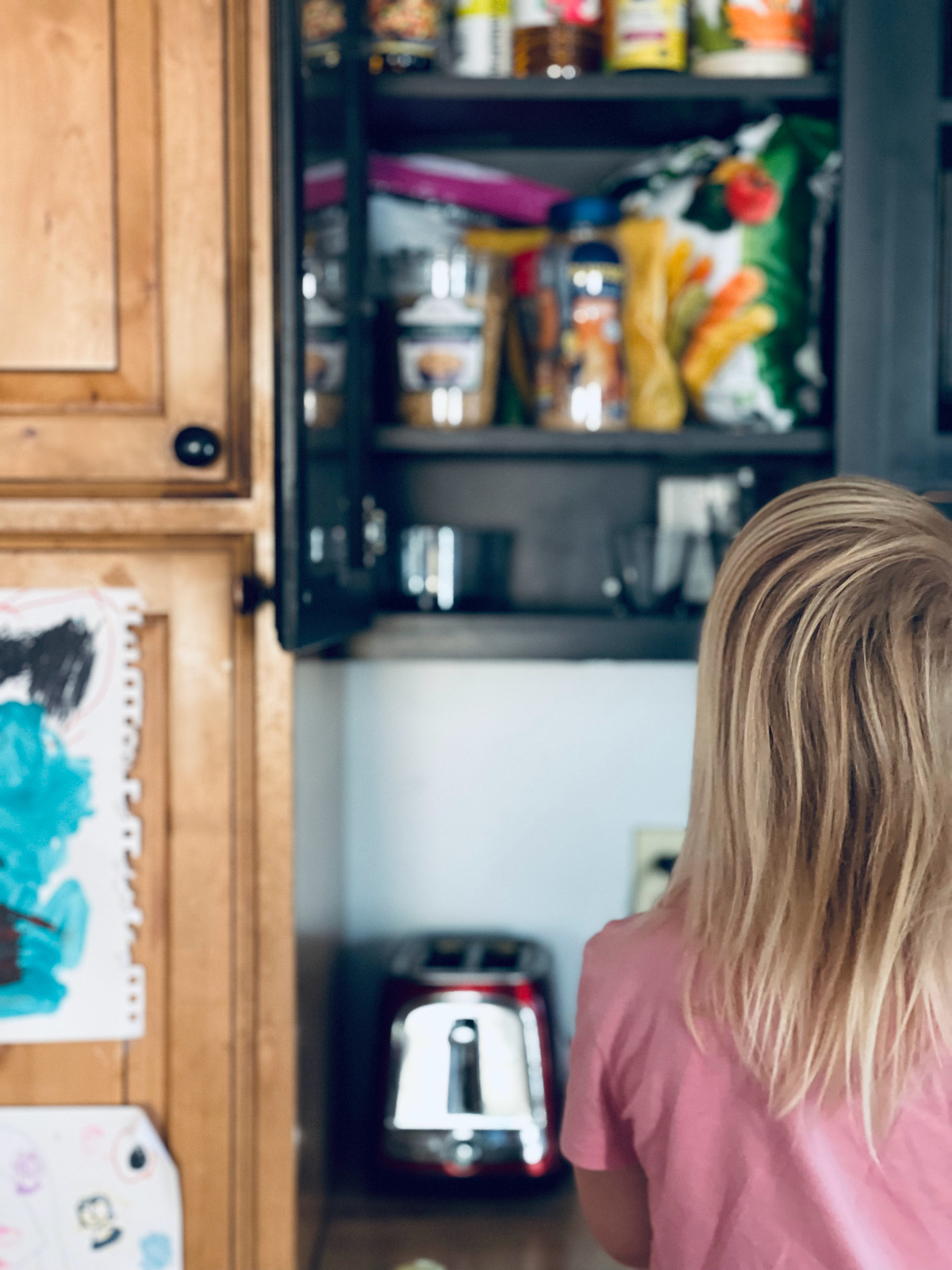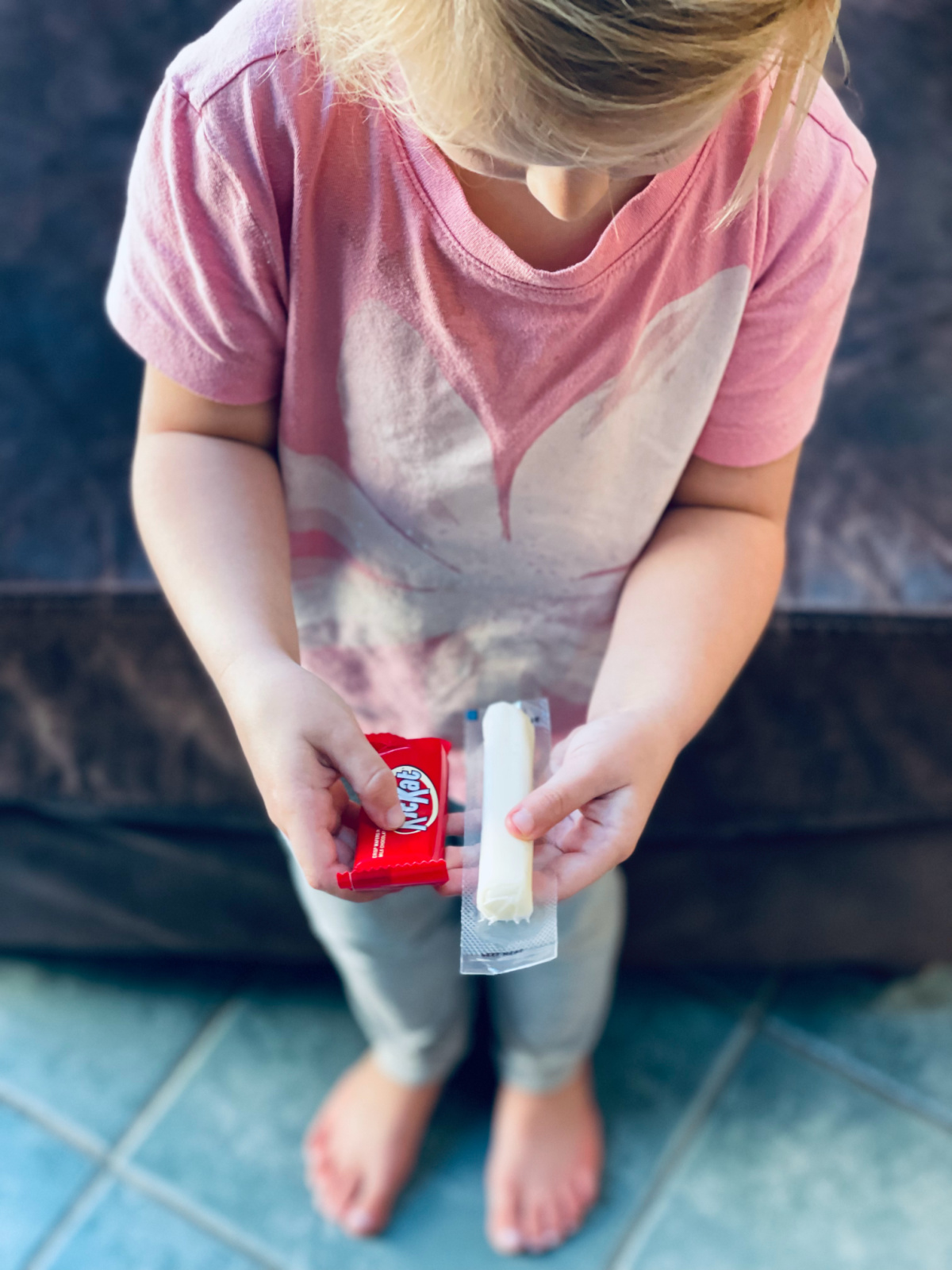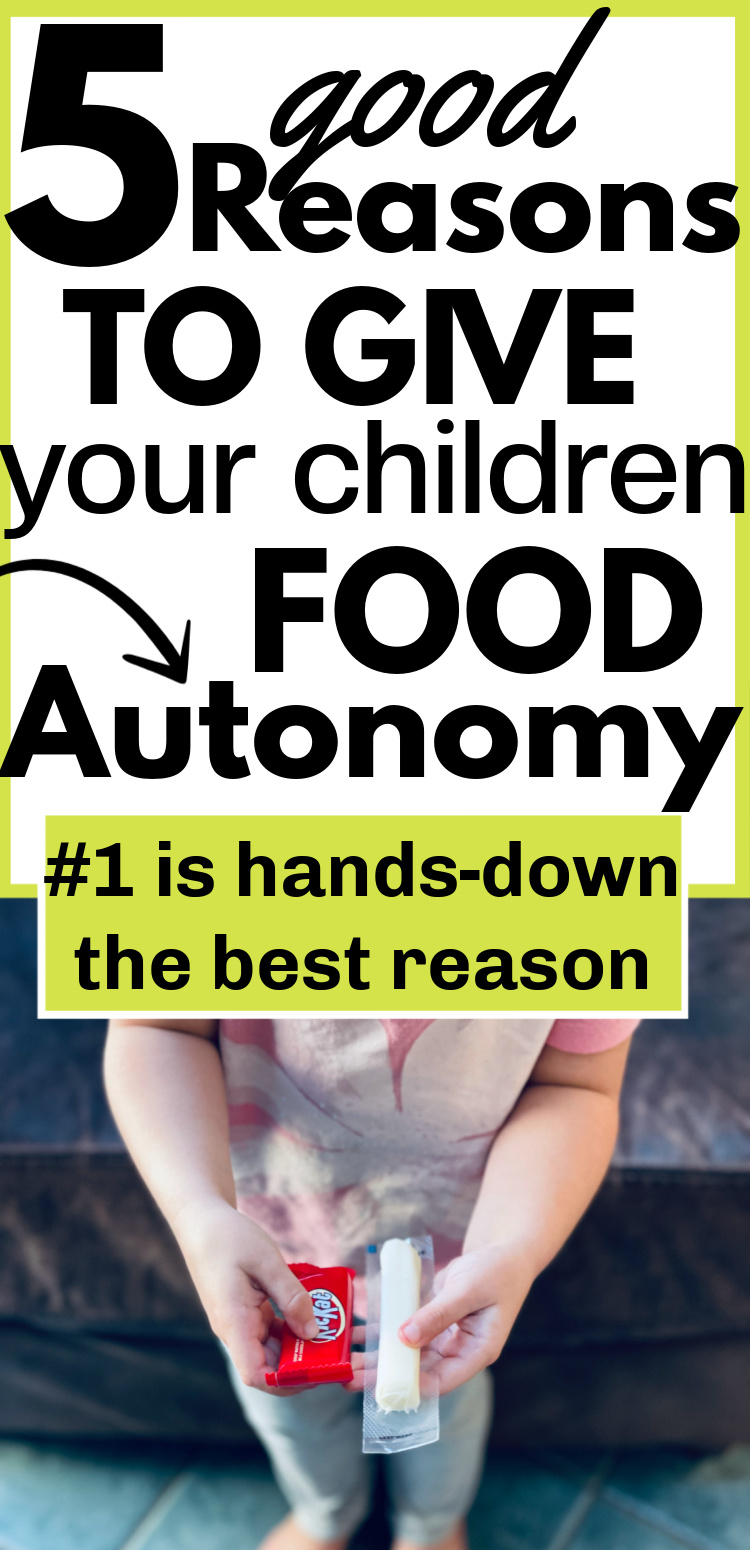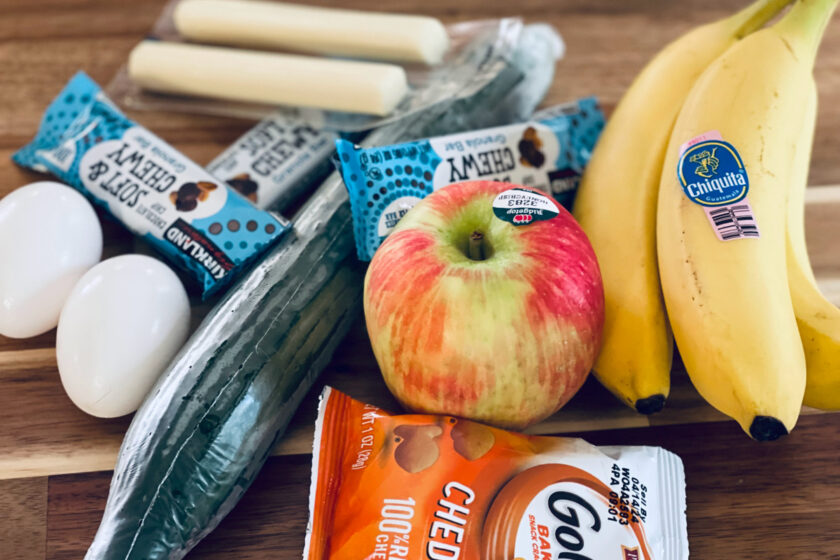Inside: Wondering why any sane parent would give their children food autonomy? Letting them decide what to eat and when? Here are five really good arguments (I think so, anyway!) for food autonomy for kids.
I’ll never forget the day my middle child became a vegetarian.
He was only 3-years-old.
We were sitting at Wendy’s, eating fries and chicken nuggets, and he asked a simple question that most kids ask at some point:
“Where does meat come from?”
I looked into the eyes of this quiet, sensitive child and knew I had to tell him the truth. Little did I know just how much my answer would change everything.
“It comes from dead animals – chickens, actually”
A look of horror came over his face. He put down the half-eaten nugget and refused to take another bite.
That day, he decided he was a vegetarian, and he hasn’t taken a bite of meat since.
His decision, along with subsequent food texture sensitivities, forced us to reevaluate how we approach food in our home.
It led us to food autonomy for kids, and we haven’t looked back.

The Reasoning Behind Food Autonomy for Children
This post probably contains affiliate links, which means I may earn a commission if you make a purchase through those links. As an Amazon Associate, I earn from qualifying purchases. You can find our full disclosure HERE.
Seven years ago, food autonomy was not on my radar.
We weren’t “clear your plate” parents, but we were in a “you need to try dinner at such and such time” and “candy for breakfast? Heck no!” kind of place.
So why on earth would you ever consider letting your child decide what to eat and what not to eat? When to eat and when not to?
How did we become convinced that this was the way to go?
For starters, restricting food was starting to give me the same uneasy feelings I had when I was trying to force my breastfed baby to conform to a Babywise eating schedule. *Shudder*
It’s taken me a long time to learn how to listen to my parent intuition. And even longer to actually act on those uneasy feelings and make changes in our parenting.
But the more we transitioned to respectful parenting, the more it didn’t make sense NOT to give our kids autonomy when it came to food.
Here are our top five reasons.
You Might Also Like: Considering Not Limiting Screens? 7 Guiding Principles for Parents
1. Children’s bodies are their own: consent matters.
In today’s culture, children have very little control over their lives and their own bodies.
They are told what to wear (or not wear), what to eat and when, when to go to sleep, how and what to learn, and even when to go to the bathroom and when they need to wait (a.k.a. school).
And we wonder why they don’t understand the idea of consent?
Adults are not inside the brains and bodies of children. We don’t know when they’re full, when they’re hot or when they’re cold.
We assume children must be hungry (or cold) based on external factors like clocks and school and schedules and doctor’s caloric needs charts, what and how much and when we were fed as children or even our own bodily rhythms.
Food autonomy supports the child’s consent on every level, including the decision of what goes into their mouths and bodies.
And often, there is a good reason children give up foods, reasons they might not be able to express.
My vegetarian? When he was older, he started giving up certain foods, one by one.
We came to find out a couple years later from his speech therapist that he had very weak cheek and jaw muscles, which made chewing foods like rice very tedious and difficult.
She wasn’t surprised at all that he gave them up. (She prescribed daily gum-chewing to strengthen his muscles.)
Bottom Line? Food autonomy respects your child’s “no”. If you, the most important person in their life, doesn’t, then why should we expect them to set good boundaries later?
2. Every body is different, and a “balanced” diet looks different for everyone.
Adults thrive on different diets and eating times, and they’re free to experiment with food to see what feels best in their own bodies.
As an adult, I cannot imagine being forced to eat certain foods – or told I can’t eat certain foods – just because some outside authority says so.
(Speaking of outside authorities, remember the food pyramid we all learned in school that has since been deemed “outdated” and “inaccurate? Sigh.)
I got a taste of this when I was pregnant with my firstborn and at every appointment, my midwife would tell me I gained “too much weight”. According to her, I needed to lay off sweets and ice cream, especially if I didn’t want – God forbid – stretch marks.
Interestingly, I followed my body’s instincts for subsequent pregnancies without restricting my food choices or intake, and I gained 15-20 pounds less than my first pregnancy each time.
Food autonomy trusts that children know their body best, and it gives them permission to say no to foods that don’t make their body feel good or that don’t taste good (long ago, taste used to save people’s lives!).
My oldest, for example, cannot tolerate fried foods or dishes with heavy cream. She will occasionally have french fries or whipped cream, but not often.
I recently heard a favorite Youtuber say that her balanced diet is more spread out over a week, eating all fruits and vegetables some days and all carbs on others.
Two people of the same height and weight can have different diets and different caloric needs.
I read THIS article written by a woman learning how to eat intuitively for the first time, and she described it this way…
“By listening to my own wisdom, I found the eating compass I didn’t know I needed.”
Ali Francis, Bon Appetit
So why not learn to listen to your own wisdom from a young age?
Every body needs different things, and parents don’t know their child’s body better than their child does.
3. Learning to follow your intuition for your body’s most basic needs is an extremely valuable life skill. Being taught to ignore those needs on a regular basis is dangerous.
Did you know that capitalism has had a huge impact on how people eat, particularly when and how often they eat? Factories’ clocks started dictating when people could eat, and how fast they needed to eat.
(Note: Capitalism also impacts food in other ways, like lack of regulation on harmful ingredients, businesses control on food production and distribution, processed foods costing more than whole foods and food deserts where processed foods dominate the one grocery store in a 30 mile radius.)
Schools do the same thing.
Children are forced to conform to the school’s schedule around food. And bathroom needs and sleep and movement and…well, you get the idea – this is a big reason why we don’t send our kids to school.
Any scenario when children are forced to ignore their body’s needs is not a good one, in my opinion. And it can lead to ignoring even more important instincts later on.
When we force our kids to try new foods, clear their plates, and eat only at certain times, we are potentially teaching our kids to ignore their own bodily cues and intuition.
Take the common parenting practice to make your kids wait to eat until dinner – no snacks. I’m sure you’ve heard or said it yourself, “I’m sorry you’re hungry, but eating now will ruin your dinner. You need to wait.”
Have you ever felt faint from low blood sugar because you needed to eat? I have, and I genuinely needed to eat something to not pass out from hunger.
How can any adult say with certainty that kids are not experiencing that intense, low blood sugar, “I need to eat now” hunger?
Food autonomy validates the body’s cues and instincts, instead of shaming them, dismissing them or forcing conformity to the group or culture at large. It lays the groundwork for trusting your intuition in bigger things like relationships and decision-making down the road.
Learning to trust your instincts and listen to your body is one of the most valuable life skills you can have.
And I’ll ask again because it’s such an important question: if you don’t start learning from a young age, then when?
4. Restricting certain foods only makes them seem more desirable and delays learning how to self-regulate.
The same scarcity mentality that can apply to screen time when it’s restricted also applies to food.
If you bring candy, desserts or certain snacks into your home, but then restrict when they can be eaten, it makes them seem more desirable, not less.
Especially if your kids see you indulging in restricted foods when you like, but they are told “not until you finish this certain food”, they’ll want it even more.
When no foods are off limits, kids will see sweets or snacks as just another food option, not as “bad” foods. They will also pay more attention to how their body feels when they consume certain amounts of sweets or snacks.
(This freedom needs to be coupled with information about types of foods and what they do in the body, which I’ll get to in the next post.)
One of my kids actually asked me to stop getting candy every week at the store (why I fell into this habit, I don’t know). It was too much sugar, he said.
Another child purposely reduced her consumption of chocolate chips and experimented with ways to make herself eat a fruit or vegetable first.
I believe food autonomy helps children develop a healthier relationship with food from a young age.
Related: The Case for Unlimited Screen Time for Kids (from a Recovering Control Freak)
5. Allowing your children (and yourself) to eat intuitively can save money and reduce food waste.
If nothing else, consider food autonomy and intuitive eating for your kids – and your whole family – to save money on food.
I looked at the USDA’s moderate food budget and added up everyone in our family. According to them, I should be budgeting $2200 for food each month. YIKES.
That number is based on only preparing and eating food at home and never eating out.
We currently spend on average $1800 per month on eating out and groceries, including toiletries, soap, cleaning supplies, etc., $400 less than the recommended moderate plan, which only includes food groceries.
We also throw away a lot less food because we buy food based on what we all actually eat, not what I wish they would eat.
I also don’t control when everyone eats. We all mostly follow our own hunger cues or eat when we want/need to.
This also leads to less waste because sometimes big group meals where not everyone is hungry can lead to leftovers that don’t keep.
You Might Also Like: 9 Secrest to Saving Money on Groceries Without Coupons (or Aldi)

The Foundation of Food Autonomy for Children is Trust
Ultimately, I chose this path because I trust that my kids are smart humans who are hard-wired to learn.
I trust that they will figure this whole balanced diet thing out, just like I trust that they will learn what they need to learn when they need to learn it (unschooling).
And how will they learn if they aren’t given a chance to try? To experiment, get the results, adjust and try again?
I’ve watched a child decide to spread out Halloween candy over a month or two because they don’t want all that sugar in one day.
I’ve seen a child put the chocolate chips in the fruit drawer behind the grapes, because she wanted to remember to eat fruit first before chocolate.
I’ve had a child voluntarily ask for carrots, but decide not to eat cucumbers anymore. Apparently, carrots taste better?
I’ve seen children happily accept cut up fruits and vegetables when they are offered, even though they wouldn’t cut them up for themselves or reach for them first.
I could go on, and yes, there are exceptions and caveats, which I’ll get to in my third and final post in this series, but overall our experience has been a positive one. I would choose it again.
(P.S. That girl in the picture? She chose the cheese stick – not the candy. 😉)
So what questions do you have about food autonomy for kids? Share in the comments! I’ll try to address them in the next post with more specifics on how we approach food autonomy in our home.
Read Next: Food Autonomy for Kids – Practical Advice for Making It Work


